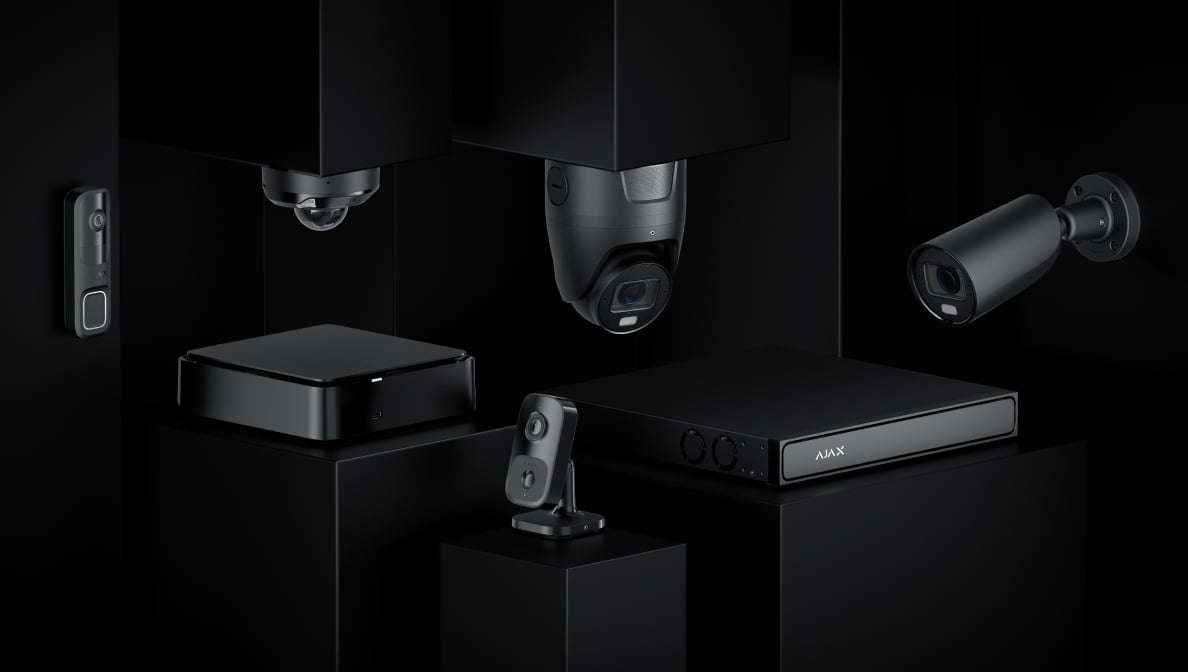
Wherever there is a risk of fire
Ajax security system wireless fire detectors

Explore Ajax firsthand
Ajax offers more than just protection. Experience the full potential of Ajax solutions — with advanced features, exceptional reliability, and an unmatched user experience.
Advanced fire safety
Ajax fire detectors provide high threat detection accuracy and comply with international standards. The self-test system diagnoses sensors and reports to the hub for minimal maintenance. SmartBracket panel allows fast installation without the detector's disassembly, simplifying the process. Configuration and testing are done via Ajax apps.
Explore the unique capabilities of Ajax Fire detectors
Next-gen smoke/heat/CO detection technologies
Ajax fire detectors use cutting-edge smoke, heat, and CO detection technologies1. A unique smoke chamber with dual-spectrum optical sensor and HazeFlow 2 algorithm ensures rapid, accurate fire detection. Advanced volatile particle size analysis distinguishes smoke from steam, triggering alarms only for real fire threats. Thermistors detect smokeless fires, excelling at sensing temperature rises from synthetic materials burning or smoldering fires. CO sensor warns of dangerous levels before poisoning symptoms appear.

Interconnected fire detectors alarm
Fire detectors feature two interconnection types: primary (via a hub) and fallback (detector-to-detector)2. In case of an alarm, the hub activates the primary interconnection. The built-in sirens of all fire detectors synchronously notify of a fire in 20 seconds. The fallback interconnection implies that the initiating detector activates the alarm and propagates it to other detectors in one minute, even if the connection with the hub is lost.

Instant alarm notifications and device monitoring
The system notified users and security companies about alarms with critical alerts from the Ajax apps, indicating which device was triggered, when, and where it happened. The system monitors device states, alerting users about malfunctions or low batteries at least 30 days before full discharge. In the case of a fire alarm, cameras and motion detectors with built-in cameras send pictures into Ajax apps to identify the cause of the alarm.

The configuration of the detectors depends on their model.
Interconnect support varies by detector model. Some support both primary and fallback interconnection, while others may only support the primary one.
Ajax product categories
In an Ajax system, you can combine devices of all product categories: Intrusion protection, Video surveillance, Fire and life safety, or Comfort and automation. Create the system to suit your needs and manage it in a single interface.
Fire alarm systems: wireless detection technology
Fire alarm systems ensure safety in areas prone to fire hazards. These systems incorporate advanced smoke, heat, and carbon monoxide (CO) detection technology to identify and mitigate fire risks promptly. Wireless fire detectors are critical to these systems, offering high detection accuracy and rapid response times to minimize potential damages.
Advanced smoke and heat detection
Modern fire alarm systems utilize next-generation technologies to enhance smoke, heat, and CO detection capabilities. Detectors equipped with dual-spectrum optical sensors and algorithms like HazeFlow 2 provide precise fire detection by distinguishing smoke from steam. This prevents false alarms, ensuring that only real fire threats trigger the system.
Thermistors detect temperature fluctuations in smokeless fires, such as those caused by synthetic materials or smoldering. CO sensors detect dangerous levels of carbon monoxide, providing early warnings before poisoning symptoms appear.
Interconnected fire detectors
Fire alarm systems feature two interconnection types to ensure immediate and effective responses. Primary interconnection connects detectors to a hub, which triggers the alarm in case of a fire. Without a hub connection, detectors with fallback interconnection communicate directly, ensuring that the alarm propagates throughout the system even if the hub is temporarily unavailable.
All fire detectors are equipped with built-in sirens that synchronize within 20 seconds to notify all areas of fire. This interconnected feature enhances the speed and reliability of the alarm notification, allowing individuals to take appropriate action quickly.
Instant notifications and device monitoring
Wireless fire detectors are integrated with real-time monitoring systems, sending instant alerts to users and security companies during a fire. These notifications include critical information, such as the device triggered, the time of the alarm, and the location. The system continuously monitors the status of each detector, providing early warnings for issues like low battery levels or device malfunctions, ensuring that the system remains functional when needed most.
Wireless fire detectors: key features
- Advanced detection: Dual-spectrum optical sensors for accurate smoke detection and thermistors for heat detection.
- Interconnectivity: Detectors communicate via a hub or directly with each other, ensuring alarms propagate even during a hub failure.
- Real-time alerts: Instant notifications about alarms and device status through dedicated apps, helping users stay informed.
- Self-maintenance: Automatic self-testing for minimal upkeep and prolonged reliability.
- Seamless installation: Quick and easy setup with wireless technology, reducing installation time and complexity.
Wireless fire detection systems offer enhanced security for homes and businesses, ensuring rapid response to fire-related threats. The systems' ability to provide continuous monitoring and instant notifications helps safeguard lives and property in fire-prone environments.















